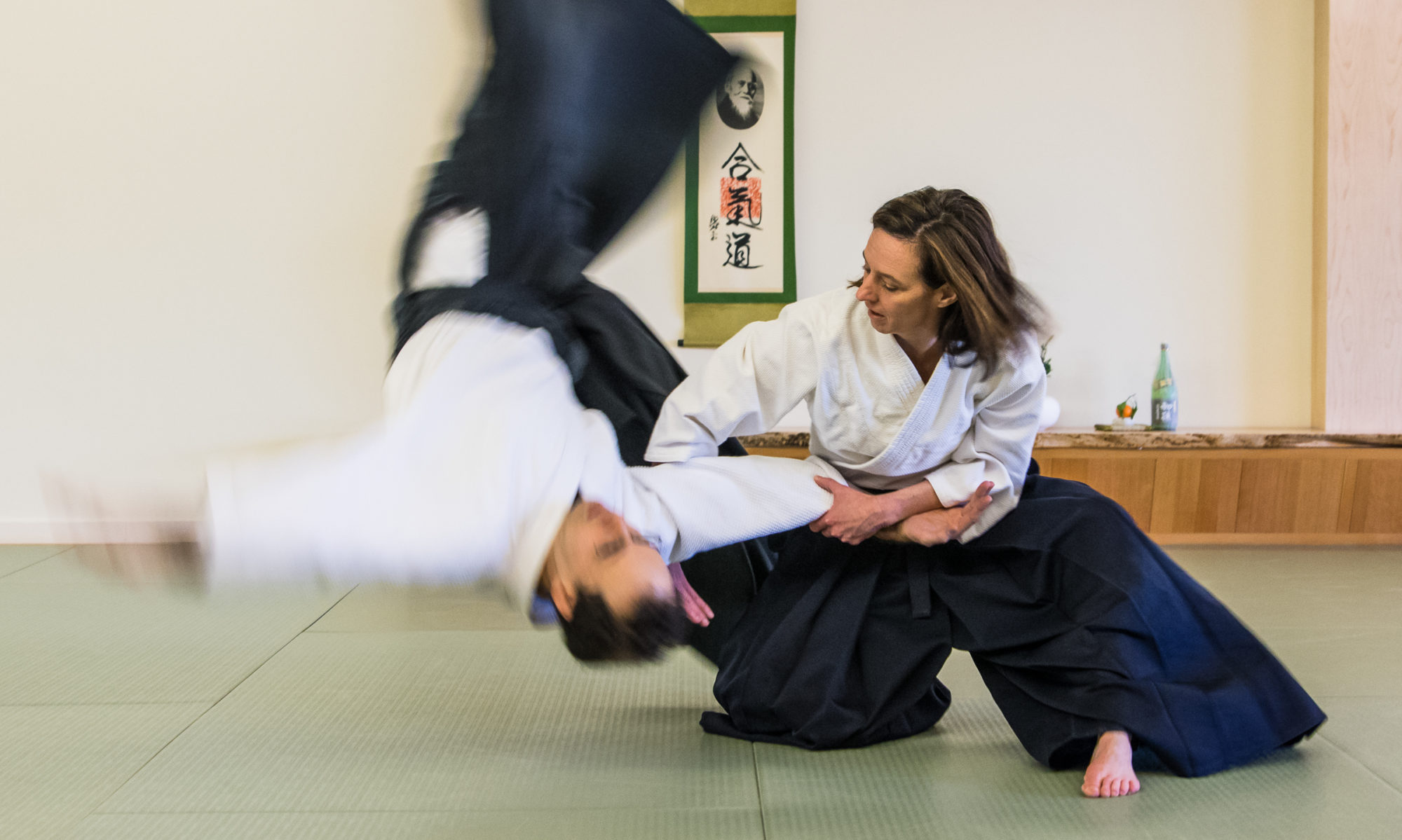As I walked out of the clinic after my second vaccine on a beautiful spring Seattle day I was totally overcome with the desire to start skipping. Which I did! Until I felt a little twinge in my knee that made me stop. Oh right, what was I thinking? I’ve spent the past year in quarantine hardly exercising in comparison to the aikido schedule that I was used to. But really, an injury from skipping?
It may be a rude awakening for many of us that a year of quarantine has put us at risk for injury when we get back to physical activity. Our minds are so ready to rock and roll in aikido, but our bodies may need a bit of prep before we are up to the task. In the same way that you may not want to have a t-bone steak first thing out of the gate after being a vegetarian for years, you may not want to jump into that koshinage breakfall your first day back on the mat!
Over my 30 years of watching beginners walk into a dojo and get injured within the first week, I have realized that our aikido practice expects a certain level of conditioning and body literacy that most people don’t have just walking in off the street. And mind you, someone may even be fit and athletic from going to the gym, but not have the specific strength and flexibility that aikido demands.
I’ve noticed a tendency to blame the difficulty of Aikido for those initial injuries. But on deeper reflection, I think the root of our injuries comes not from trying a new thing that is difficult but from living a compromised and sedentary lifestyle that has left us prone to injury in general. You mean the way we live our lives is what makes us injury-prone? Yup. All of the hours that we spend sitting in chairs, hunched over laptops, driving cars and staring at phones has a huge hidden impact on our muscles and joints.
I remember when I first started Aikido in college and got a shoulder injury on my first day from trying a forward roll. Although I was young and athletic, I had not built up the musculature in my shoulders to take the load-bearing weight of a forward roll. If instead of doing a forward roll on my first day I would have been much better served with several weeks of targeted conditioning to build up to the necessary strength and skill needed for a roll.
As an aikido teacher I am very sensitive to making sure that students have developed both the body literacy and strength and flexibility needed before they experience the impact and torsion that aikido demands. Much of the movement in aikido is highly variable. We move in one direction and then change directions in a split second. We walk on our knees and pivot on a dime. In ukemi, we fully commit our weight to an attack and also lose our balance in multiple directions. It is an incredible full body practice! But the body must be trained and conditioned for this extreme use.
After a year off the mat, how do we make sure our bodies are ready again for Aikido? I urge people to step slowly back into what we expect of our bodies to avoid injury. While I applaud you if you have done some form of physical activity during the pandemic, like running or cycling or weightlifting, please know that there is some targeted conditioning that would be helpful to get your Aikido body back.
At Seattle Aikikai we have been offering Monday and Thursday evening (6 to 7 p.m.) online Zoom classes specifically in aikido mobility to help prepare for that re-entry back into our training. As we move back to indoor practice on the mat we will also progress slowly with individual conditioning practices as well as solo ukemi practice.
Over the next several months please join us in preparation for getting back on the mat — with some intentional mobility conditioning, those breakfalls aren’t that far off!
